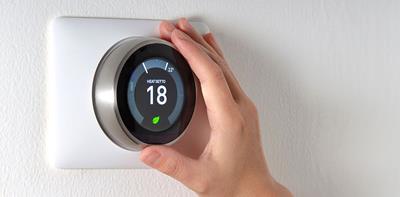
Spending time with family, decorations, great food and that special festive spirit… there’s plenty to love about Christmas.
But, without being too bah-humbug, it can create a huge amount of waste, whether that’s in the form of unwanted gifts, leftover food or plastic and packaging.
So, we’ve ten ways you can try to have a more sustainable Christmas.
1. Use recycled wrapping and eco Christmas cards
Find a set of Christmas cards that come without glitter or foil. Better still, make sure they are packed in recyclable packaging (glitter-free with no metalised paper). Keep any cards you’re given to cut out and use as gift labels.
Take a similar approach to your wrapping paper. Purchase ones made from recycled paper and printed with water-based inks to reduce toxins to the environment. Or for the eco warriors among us, why not wrap presents in fabric off-cuts, a nice reusable gift bag, or re-use leftover wrapping paper from last year! Some of the shops have even created shopping bags that can be reused, mindful wrapping.
2. Shop locally
Support your local shops and markets this Christmas. As well as being a more sustainable way to shop, you'll probably find some unique gifts that you can’t buy elsewhere, making them even more special.
3. Buy your Christmas jumper second-hand
A good Christmas jumper isn’t always about looking stylish. It’s a way of giving a woolly high five to Christmas and showing you’re at one with the festive spirit.
But they aren’t great for the environment. In fact, research has shown that most Christmas jumpers contain plastic[1].
So, why not avoid buying one new. Instead go for second hand. Stores such as Beyond Retro and the online Oxfam shop have some real corkers. It also means you’re more likely to be wearing something more unique.
4. Don’t waste food
Well-meaning Christmas hosts, who are keen to pull out all the stops for family and friends visiting at Christmas, often buy a huge amount of festive fare. The fridge and freezer are likely to be bulging in the run up to Christmas.
But an awful lot of this can end up getting wasted. So, when you do your Christmas food shopping this year, it could be worth taking a bit of extra time to plan your meals, including how you’ll use your leftovers. And if you’re struggling for inspiration, then check out the BBC Good Food website’s recipes for Christmas leftovers. Have you ever tried fried Christmas pudding?
You can always freeze leftovers too - including Christmas turkey and Christmas pudding - if you don’t fancy gorging on it for days on end.
If you’re unsure; perhaps you’ve got more guests than usual this year, and you need a bit of help, Wrap has a helpful food portion planner you can use before shopping.
5. Choose gifts that will last
Let’s face it - there’s often a lot of Christmas tat. In the desperate search for the right present for a picky friend or family member, you can easily end up getting them something they don’t really need and might not even use.
So, try and find gifts that are designed to last and won’t just end up in the bin. You could find the perfect present on the Buy Me Once online shopping platform that only sells durable, long-lasting products that are built to last.
6. Cut down on meat
Cutting down on meat at Christmas doesn’t mean foregoing your traditional turkey. But if your festive menu usually includes meat at every meal, why not try and at least introduce one meat-free evening.
After all, avoiding meat and dairy products is the single biggest way to reduce your environmental impact on the planet, according to scientists[2].
7. Get a real Christmas tree...
Given they’re made from plastic and are often transported from factories in Asia, fake Christmas trees aren’t the most sustainable choice.
Instead, opt for a real tree that was grown locally and by responsible growers who plant more trees. Then you would ideally replant it or send it for treecycling - find out if your local council will collect your old tree for composting, or there might be a local charity that can make use of it.
8. ...or just use a house plant!
Do you happen to have a large house plant? Super, it can double up as your Christmas tree. Just add some fairy lights and a few decorations and you might just pull it off.
This option isn’t for everyone, but it’s definitely a more sustainable option than buying a fake or even a real tree. There’s lots of alternatives you can try if this isn’t for you, trees made from driftwood can also look amazing in the right spot.
9. Gift an experience
Reduce demand for physical resources by giving experiences instead of physical presents.
The great thing about gifting an experience is that you can choose something that you could do together with the recipient, such as going to a concert.
These sorts of presents can work out a little dearer than physical objects but can be a great idea for some of your closest family and friends.
10. Turn down your heating
Turning down your thermostat at Christmas may not sound very warm and festive, but it’s the perfect time to do it. With plenty of guests around - decked out in their thick Christmas jumpers - nobody is going to notice if the temperature is one degree lower. But each degree really makes a big difference: in fact it’s a difference of 320kg in carbon dioxide emissions each year, according to the Energy Saving Trust[3].
For more tips on how to stay happy and safe in your home, go to Solved.
[1] https://www.bbc.co.uk/news/uk-50682657
[2] https://www.theguardian.com/environment/2018/may/31/avoiding-meat-and-dairy-is-single-biggest-way-to-reduce-your-impact-on-earth
[3] https://energysavingtrust.org.uk/get-set-colder-weather/

